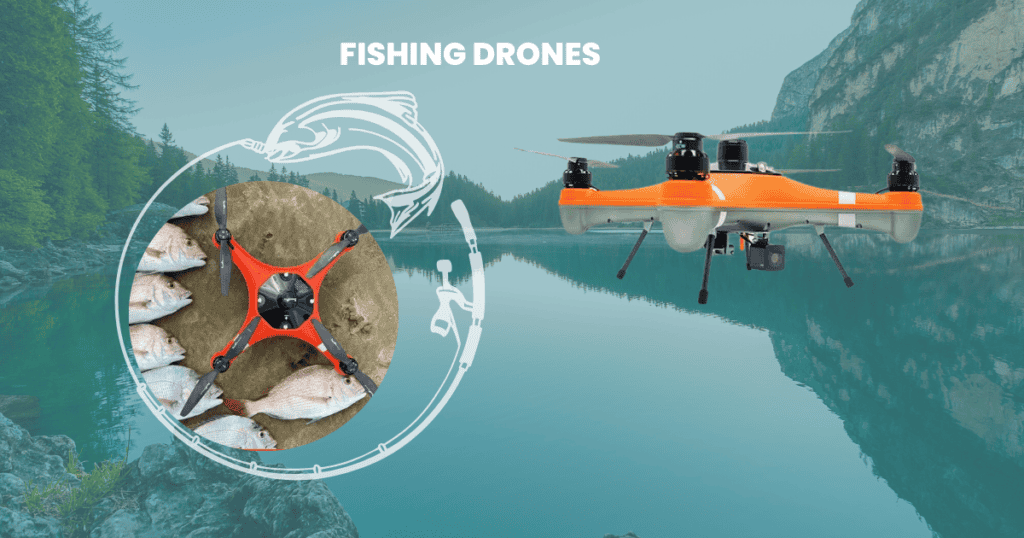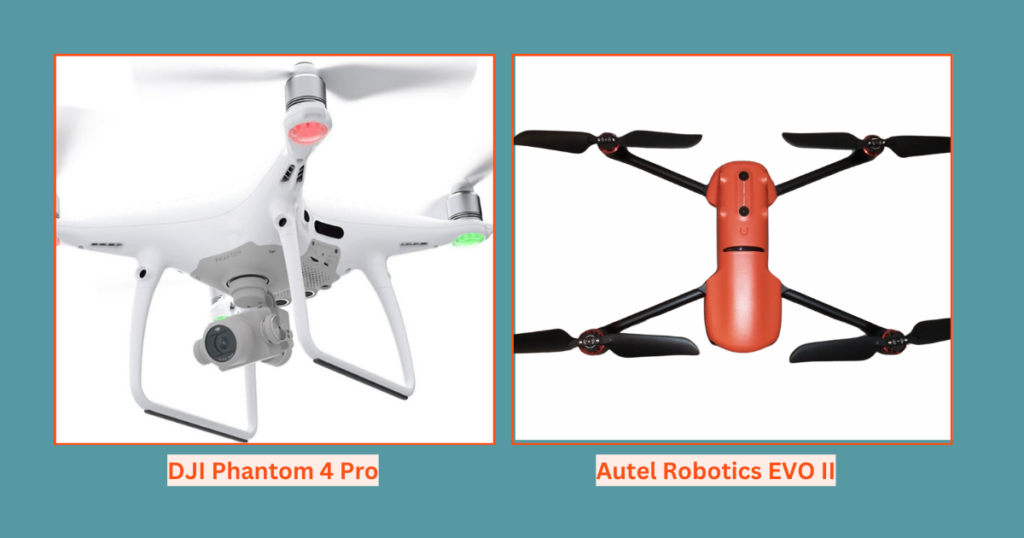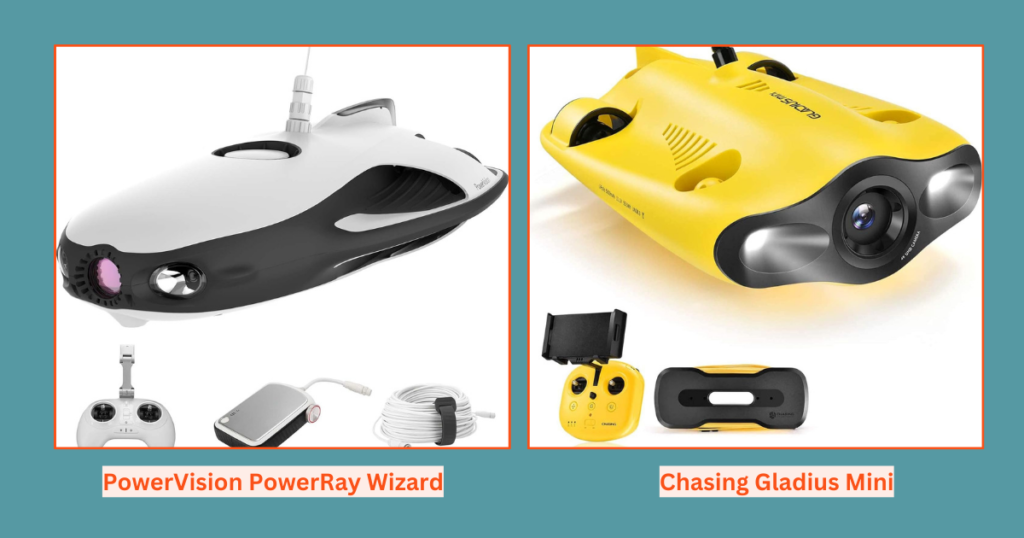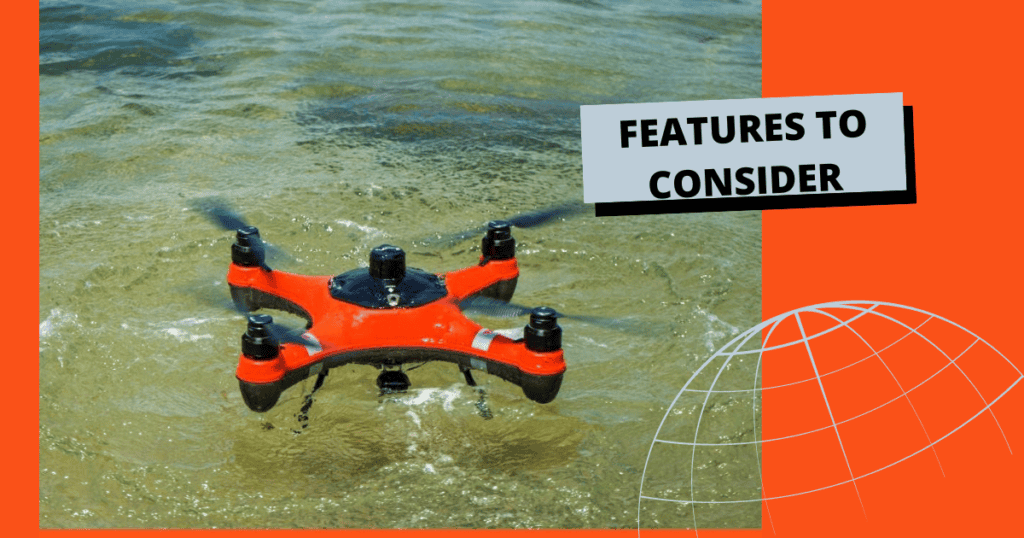Fishing drones, essentially unmanned aerial vehicles (UAVs) specifically designed for anglers, are rapidly transforming the sport. These technological marvels offer a wealth of advantages, empowering anglers to cast lines far beyond the limitations of a traditional rod and reel.

Imagine effortlessly reaching untouched fishing grounds previously inaccessible from the shore. With a fishing drone, you can scout vast areas of water from above, pinpointing hidden structures and underwater vegetation that attract fish.
Benefits of Fishing Drones:
- Extended Reach: Fishing drones can fly out over waters that are difficult or impossible to reach from shore, giving anglers access to new fishing spots.
- Efficient Bait Delivery: Drones equipped with bait release systems enable precise bait placement, increasing the chances of a successful catch.
- Enhanced Visibility: Built-in cameras on fishing drones provide real-time footage of the water below, helping anglers locate schools of fish and plan their strategy accordingly.
Whether you’re into surf fishing or prefer casting your line from a boat, there’s a fishing drone out there to suit your needs. From budget-friendly options under $500 to top-of-the-line models with advanced features like waterproofing and DJI technology, the market offers a wide range of choices for every angler.
However, it’s crucial to remember that with great power comes great responsibility. Fishing drones should be used ethically and sustainably. Always prioritize responsible fishing practices, respecting size and catch limits, and ensuring proper fish handling.
Stay tuned as we delve deeper into the world of fishing drones in this article! Let’s talk about the types of fishing drones first.
Types of Fishing Drones
Gone are the days of limited visibility and blind casting. Fishing drones have arrived, offering a new perspective and a tactical advantage for anglers. Here’s a breakdown of the three main types that will transform your time on the water:
Aerial Drones
Imagine a bird’s-eye view of the entire fishing ground. Aerial drones, with their high-resolution cameras, provide a breathtaking vantage point. These airborne observers become your eyes in the sky, scanning vast areas of water for hidden coves, feeding frenzies, and most importantly, schools of fish.
Features:
- Eagle-Eyed Scouting: Equipped with high-resolution cameras, aerial drones provide a panoramic view of the water, revealing hidden structures and underwater activity that might go unnoticed from the boat.
- GPS Precision: Forget imprecise casting. Aerial drones equipped with GPS ensure pinpoint accuracy, allowing you to drop bait right in the heart of the action.
- Bait Delivery (on some models): Some advanced aerial drones take convenience to the next level. They boast built-in bait release mechanisms, enabling you to deliver bait with surgical precision, right next to unsuspecting fish.
Use Cases:
- Spotting Schools: Scan vast areas of water quickly and efficiently to identify concentrations of fish, maximizing your chances of a successful catch.
- Mapping the Terrain: Create detailed 3D maps of underwater structures like reefs and drop-offs, allowing you to target specific fish habitats with unmatched precision.
- Live Streaming: Share the thrill of the hunt! Live stream your fishing escapades with fellow anglers and capture the excitement of the catch from a unique aerial perspective.

Popular Models:
- DJI Phantom 4 Pro: Renowned for its exceptional camera quality and intelligent flight features. Generally more user-friendly and easier to fly, especially for beginners. It also has a longer range than the base model Autel Robotics EVO II Pro.
- Autel Robotics EVO II Pro: It offers a longer flight time (up to 40 minutes) compared to the Phantom 4 Pro and a high-resolution camera with good low-light performance. This can be beneficial for spotting fish in low-light conditions.
Underwater Drones
While aerial drones dominate the skies, underwater drones delve into the watery depths, exploring the hidden world where fish roam. These submersible scouts equip you with an invaluable tool – the ability to see what lurks beneath the surface.
Features:
- X-Ray Vision (almost): Equipped with advanced sonar systems, underwater drones act like fish finders on steroids. They reveal detailed underwater topography and pinpoint the exact locations of fish, giving you an unfair (but awesome) advantage.
- Silent Operators: Unlike traditional fish finders that rely on sound waves, underwater drones operate silently. This stealthy approach ensures you won’t spook your prized catch before you even have a chance to cast.
Use Cases:
- Fish Identification: Observe fish behavior up close and personal. Get to know your target species better and learn about their preferred hiding spots.
- Checking Bait Placement: Ensure your bait isn’t landing in a barren wasteland. Use underwater drones to verify that your bait presentation is right in the strike zone.
- Inspecting Structures: Submerged obstacles like logs and rocks can harbor fish. Underwater drones allow you to investigate these structures thoroughly, unearthing potential honeyholes.

Popular Models:
- PowerVision PowerRay Wizard: A powerful underwater drone with a long runtime and excellent image quality.
- Chasing Gladius Mini: A compact and affordable underwater drone perfect for exploring tight spaces.
Hybrid Drones
For the ultimate angler who craves versatility, hybrid drones offer the best of both worlds – aerial and underwater exploration in a single package. These transformers of the fishing drone world seamlessly transition between soaring through the air and diving beneath the surface.
Features:
- Unmatched Versatility: Hybrid drones eliminate the need for separate aerial and underwater units. They provide a comprehensive view of your fishing environment, allowing you to strategize effectively.
- Seamless Transition: Switch between aerial and underwater exploration with ease. These adaptable drones allow you to scout vast areas from above and then dive down for a closer look at promising underwater structures.
- Dual Cameras (on some models): Capture stunning visuals from every angle. Some hybrid drones boast both high-resolution aerial cameras and underwater cameras, giving you a complete picture of the fishing environment.
Use Cases:
- Dynamic Exploration: Effortlessly switch between aerial scouting and underwater investigation. Plan your approach strategically and target fish with unmatched precision.
- Extreme Angling: Hybrid drones open up new fishing possibilities. Tackle challenging environments like murky water or dense vegetation with confidence.
Popular Models:
- Geneinno Titan: A powerful hybrid drone with long-range and excellent camera capabilities.

Choosing the right fishing drone is akin to selecting the perfect fishing rod – it should seamlessly complement your angling style and target species. Here’s a breakdown of key features to consider before casting your drone (metaphorically speaking) into the vast selection available:
1. Camera Quality: Your lens is your fishing buddy’s eye. Opt for high-resolution cameras to spot fish schools, monitor water clarity, and document your adventures. Example: The DJI Phantom 4 Pro is renowned for its exceptional camera quality. It boasts a 1-inch 20-megapixel CMOS sensor capable of capturing stunning 4K video at 60 fps.
2. Battery Life: Long-lasting batteries ensure extended fishing sessions. Imagine capturing that trophy fish without worrying about power! Example: The PowerVision PowerRay underwater drone boasts an impressive 4-hour battery life, allowing you to explore vast underwater areas on a single charge.
3. Range and Signal Strength: A robust signal keeps your drone under control. Explore distant corners of the lake without losing connection. Example: The Autel Robotics EVO II Pro offers an impressive transmission range of up to 8km, allowing you to explore vast fishing grounds with confidence.
4. Waterproofing: Drones and water don’t always mix well. Look for waterproof models that can handle splashes and unexpected dives. Example: The SplashDrone 4 is a purpose-built fishing drone boasting an IP67 waterproof rating. This means it can withstand being submerged in up to 1 meter of water for up to 30 minutes.
5. Bait Release Systems: Precision matters. Choose drones with bait release mechanisms for accurate casting. Example: The Swellpro Fisherman FD series boasts an impressive payload capacity of up to 3.5kg, allowing you to deploy multiple fishing lines or even live bait with pinpoint accuracy. Its bait release mechanism is integrated with the flight controller, enabling automatic bait release at designated GPS waypoints.
By carefully considering these features and your individual needs, you’ll be well-equipped to select the perfect fishing drone that elevates your angling experience to a whole new level. Remember, a fishing drone is an investment that can transform the way you fish, opening doors to new possibilities and unlocking a world of underwater secrets. So, cast off the limitations of traditional fishing and embrace the future with a trusty fishing drone by your side.
Read: The Best DJI Drones in 2024: Top Picks for Beginners
Pros and Cons of Using Fishing Drones
Fishing drones are revolutionizing the sport, offering a wealth of advantages that can significantly enhance your angling experience. However, like any new technology, there are considerations and potential drawbacks to be aware of. Let’s weigh the pros and cons to help you decide if a fishing drone is the right fit for you.
Advantages
- Precision:
- Bullseye Accuracy: Fishing drones allow you to drop bait or lure with surgical precision. No more casting blindly; hit the sweet spot every time.
- Spotting Schools: Their high-resolution cameras reveal fish schools, helping you strategize effectively.
- Hover and Observe: Hover above a promising spot, observing fish behavior without disturbing them.
- Accessibility:
- Reach the Unreachable: Drones explore areas that are hard to access from the shore or boat.
- Scout New Waters: Discover hidden coves, submerged structures, and fish-rich pockets.
- No Boat Required: Even landlocked anglers can now explore lakes and rivers like seasoned mariners.
- Unique Perspectives:
- Bird’s-Eye Views: Witness the water’s topography from above, spotting underwater features.
- Cinematic Shots: Capture stunning videos of your fishing adventures.
- Instagram-Worthy: Impress your followers with aerial shots of your catch.
Challenges
- Legal Restrictions:
- Airspace Rules: Abide by FAA regulations. No buzzing near airports or restricted zones.
- Privacy Concerns: Respect others’ privacy; avoid spying on sunbathers or neighboring boats.
- Wildlife Disturbance: Minimize disruption to birds and wildlife.
- Learning Curve:
- Pilot Skills: Mastering drone flight takes practice. Expect a learning curve.
- Weather Awareness: Wind, rain, and storms affect drone performance.
- Maintenance Know-How: Regular checks and software updates are essential.
- Cost:
- Initial Investment: Quality fishing drones aren’t cheap. Consider it an investment.
- Accessories Add Up: Spare batteries, propellers, and waterproof cases increase costs.
- Insurance: Protect your investment with drone insurance.
By carefully considering these pros and cons, you can make an informed decision about whether a fishing drone is the right addition to your angling arsenal. Remember, responsible use, adherence to regulations, and a commitment to honing your piloting skills are paramount for a safe, enjoyable, and rewarding fishing experience with your drone.
Choosing the Right Fishing Drone
With a vast array of fishing drones available, selecting the perfect one can feel overwhelming. Don’t worry – by carefully considering your needs and budget, you can find the ideal drone to elevate your fishing experience. Here’s a roadmap to guide you:
1. Evaluate Your Needs: Casual Casting or Competitive Edge?
- Casual Anglers: If you enjoy occasional fishing trips on local ponds or spend weekends casting lines from the shore of a lake, a user-friendly drone with basic features might be the perfect fit. Prioritize ease of use and affordability. For example, the** DJI Spark** is a great option for casual anglers. It’s a compact, budget-friendly drone with a user-friendly interface and a decent camera, allowing you to scout nearby areas and drop bait with improved accuracy.
- Professional Anglers: For serious anglers who frequently fish large bodies of water and compete in tournaments, a feature-packed drone becomes an essential tool. Look for advanced capabilities like long flight times (to explore vast areas), a robust camera with exceptional zoom and low-light performance (for identifying fish species and underwater structures), and a reliable bait release mechanism with pinpoint accuracy. Consider durability as well, as these drones will likely see frequent use. For instance, the Autel Robotics EVO II Pro is a high-end drone favored by professional anglers. It boasts a long flight time of up to 40 minutes, a powerful camera with a 6K resolution and a 1-inch sensor, and a payload capacity that can handle even heavy lures or live bait.
2. Budget Considerations: Balancing Features and Cost
- Set a Budget: Before diving into specific models, determine how much you’re realistically comfortable spending on a fishing drone. Fishing drones range in price from under $500 to several thousand dollars, so having a budget in mind will help narrow down your options.
- Feature Prioritization: Not all features are created equal. Allocate your budget towards functionalities that matter most to your fishing style. For example, if precise bait placement is your top priority, invest in a drone with a reliable bait release system. On the other hand, if capturing stunning aerial footage is what excites you, prioritize a drone with a high-quality camera and image stabilization features.
3. Research Specific Models Based on Your Requirements
Once you have a good understanding of your needs and budget, delve deeper into researching specific models. Here are some helpful tips:
- Read Reviews: Learn from the experiences of other anglers. Online reviews and forums offer valuable insights into the strengths and weaknesses of various fishing drones. Look for reviews from anglers with similar fishing styles and priorities to yours.
- Compare Specs: Don’t get bogged down by technical jargon, but focus on the key specifications that matter most. Pay attention to battery life (how long can you fly before needing to recharge?), range (how far can the drone travel from the controller?), camera quality (resolution, zoom capabilities, low-light performance), and durability (materials used, water resistance). Many online retailers offer comparison charts that can simplify this process.
- Consider Brands: Several reputable drone manufacturers offer fishing-specific models or drones well-suited for fishing applications. Popular brands include DJI, Autel Robotics, and PowerVision. Researching these brands and their product lines will give you a good starting point for your search.
By following these steps and carefully considering your needs and budget, you’ll be well-equipped to navigate the vast selection of fishing drones and find the perfect one to reel in a more successful and rewarding fishing experience.
Read: Cheapest DJI Drones in 2024: Your Gateway to Stunning Aerial
Legalities and Regulations: Navigating the Legal Waters
Before taking flight, familiarize yourself with drone regulations. The FAA sets the groundwork:
- Register your drone: If it weighs over 0.55 lbs (250 grams), register it with the FAA through DroneZone.
- Fly responsibly: Always prioritize safety. Maintain visual contact, follow altitude restrictions (typically 400 ft. max), and avoid crowds or moving vehicles.
- Stay informed: Drone regulations evolve. Regularly check the FAA’s DroneZone for updates.
Commercial Use? Obtain a License
If you plan to use your drone for commercial fishing (e.g., aerial photography for charters), you’ll need a Part 107 remote pilot certificate from the FAA. This requires passing a knowledge test and following specific commercial drone regulations.
Safety First: General Guidelines
Always prioritize responsible drone use:
- Avoid crowds: Steer clear of flying over gatherings or events.
- Maintain distance from airports: Respect airspace restrictions and no-fly zones.
- Respect wildlife: Avoid disturbing wildlife habitats with your drone.
By understanding these regulations and safety practices, you can ensure your drone fishing adventures are legal, safe, and enjoyable. Fly responsibly and explore the exciting world of fishing from a new perspective!
Conclusion
Fishing drones are revolutionizing the sport, offering a wealth of advantages that can significantly enhance your angling experience. From scouting vast areas and pinpointing fish locations to capturing stunning aerial footage and sharing your passion with the world, these innovative tools open doors to entirely new fishing possibilities.
However, with this exciting technology comes the responsibility to use drones safely and responsibly. Familiarize yourself with local and federal regulations, prioritize responsible flight practices, and prioritize the well-being of the environment. By following these guidelines, you can ensure your drone fishing adventures are not only successful but also legal and sustainable.
So, are you ready to cast off the limitations of traditional fishing and embrace the future? With a trusty fishing drone by your side, a world of possibilities awaits. Happy drone fishing!

Leave a Reply
You must be logged in to post a comment.